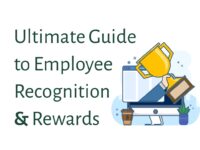Employee engagement stands as a pivotal factor in the success and resilience of organizations. Conducting employee engagement surveys is an excellent way for management teams to measure job satisfaction, productivity, and retention rates. An often overlooked part of creating a strong action plan after an employee engagement survey is to consider the inclusion of more learning and development (L&D) opportunities available for your talent. When employees are supported in their growth and see a path forward in their careers, their connection to their work deepens. Let’s highlight key areas where focused L&D efforts can significantly elevate employee engagement levels across various industries. Identifying and nurturing these areas not only drives performance but also fosters a culture of continuous improvement and innovation.
Understanding Employee Engagement
Employee engagement is a multifaceted concept that encompasses the emotional and psychological commitment an employee has toward their organization and its goals. Optimal employee engagement manifests in higher levels of enthusiasm, effort, and loyalty.
The dimensions of engagement often include a sense of purpose, the opportunity to do what one does best, and the feeling of contributing to something significant. Engaged employees are not just present. They are passionate about their work and feel a profound connection to their company. This engagement drives them to go above and beyond, resulting in increased productivity, better customer service, and lower turnover rates.
The role of Learning & Development (L&D) in fostering a culture of engagement cannot be overstated. By investing in L&D, organizations signal to their employees that their growth and development are valued, directly impacting employees’ sense of belonging and commitment.
L&D Case Studies: How Microlearning Boosts Employee Engagement
Recent research underscores the powerful impact of L&D initiatives on employee engagement. A study by LinkedIn Learning’s Workplace Learning Report reveals that 94% of employees would stay at a company longer if there was an investment in their learning and development.
Furthermore, the Gallup State of the American Workplace Report indicates that organizations with highly engaged workforces are 21% more profitable than those with poor engagement levels. These statistics highlight a clear correlation between L&D opportunities and enhanced employee engagement and loyalty.
Targeted development opportunities play a crucial role in boosting employee engagement. For instance, personalized learning paths that align with individual career aspirations can significantly enhance engagement levels.
Several case studies demonstrate the positive outcomes of effective L&D strategies on employee engagement. Known for its innovative culture, Google heavily invests in employee development through its Googlers-to-Googlers Program, where employees teach one another. This peer-to-peer learning environment fosters a strong sense of community and engagement by empowering employees to share knowledge and skills.
Similarly, AT&T’s ambitious Future of Work initiative aims to reskill its workforce for the digital age by providing a wide range of L&D opportunities. From online courses to degree programs, AT&T has significantly improved its employee engagement scores, showcasing the potential of comprehensive L&D strategies to transform organizational culture and performance.
These examples and data points illustrate the undeniable link between robust L&D programs and high employee engagement. By prioritizing personalized, accessible, and strategic development opportunities, organizations can cultivate an engaged, motivated, and future-ready workforce.
Key Areas for Development to Enhance Employee Engagement
To foster a truly engaged workforce, it’s essential to focus on developing both the general and specific skills of employees. Creating a robust L&D program enhances their ability to perform, improve employee engagement, and deepens their connection to the organization. By demonstrating an investment in their personal and professional growth, you can make a meaningful difference in employee engagement. Here are some development opportunities to consider for your team.
General Skills Development
Life skills, such as communication, leadership, and emotional intelligence, are foundational to effective teamwork and leadership. Developing these skills across the workforce fosters a culture of clarity, empathy, and shared leadership.
For example, communication training can help eliminate misunderstandings and build trust within teams. Meanwhile, leadership and management training equip both current and aspiring leaders with the skills to motivate and inspire their teams.
Lastly, incorporating emotional intelligence training further ensures that employees can manage their emotions and understand those of others. This type of training leads to more productive and harmonious work relationships.
Industry-specific Technical Skills
In an era marked by rapid technological advancement, possessing up-to-date industry-specific technical skills is crucial. Training programs focused on digital literacy and technology adaptation enable employees to leverage modern tools, streamline workflows, and innovate processes.
Such initiatives not only keep the organization competitive but also instill a sense of pride and competence among staff members. By making opportunities to hone digital skills accessible, it directly impacts their engagement and commitment to the company’s mission.
Career Development and Progression
Structured support for career development and progression plays a significant role in maintaining high levels of employee engagement. Offering clear pathways for advancement, including succession planning and role-specific training, signals to employees that their career aspirations are recognized and supported.
Making these learning opportunities available motivates individuals to invest in their own development. It also strengthens their loyalty to the organization, reducing turnover and fostering a culture of ambition and growth.
Innovation and Creative Thinking
Encouraging innovation and creative thinking through creativity workshops, innovation incubators, and cross-functional team projects nurtures an environment where new ideas are valued and pursued.
This type of culture not only drives organizational growth but also deeply engages employees. They provide employees with opportunities to express themselves and look at things differently. In turn, employees are better prepared to contribute meaningfully, challenge the status quo, and collaborate across departments and disciplines.
Wellness and Work-Life Balance
Employees need to invest in the education of their employees beyond skill sets. In 2024, the importance of wellness and work-life balance has never been more apparent.
Implementing stress management workshops, teaching time management skills, and promoting health and wellness programs demonstrate an organization’s commitment to the well-being of its employees.
Such initiatives not only improve the overall health of the workforce. They also enhance job satisfaction and engagement by showing that the organization values its employees beyond their professional contributions.
How to Implement an Effective L&D Program
Implementing effective L&D programs requires a strategic approach that focuses on creating engaging and impactful learning experiences. Let’s take a closer look at some ways to make your L&D programs for your employee survey feedback action plan successful.
Make Microlearning Accessible
Microlearning breaks educational content into smaller, more manageable pieces that can be easily consumed and retained by learners. This method caters to the modern employee’s shorter attention spans and busy schedules, allowing for flexible learning that fits into their workflow without overwhelming them.
Personalize the Educational Materials
Personalization in learning paths is paramount. Tailoring the learning experience to meet individual needs, skills gaps, and career aspirations not only enhances the learner’s engagement with the content but also boosts their motivation to apply what they’ve learned.
By leveraging technology, organizations can create accessible and flexible learning opportunities that accommodate diverse learning styles and preferences, ensuring that all employees have the resources they need to succeed.
Using AI for L&D Initiatives
The integration of Artificial Intelligence (AI) in L&D programs presents an innovative way to further enhance learning experiences and improve employee engagement scores. AI can help in curating personalized learning paths, providing real-time feedback, and identifying areas for improvement.
Leveraging AI makes L&D initiatives more effective, personalized, and aligned with organizational goals. Incorporating platforms like Bonfyre Culture Coach can significantly streamline these efforts.
Bonfyre offers tools for sending campaigns to promote new L&D content availability, automated nudges to help learners practice what they’ve learned through engagement actions, and reward incentives for those who complete tasks.
Integrating microlearning, personalized paths, and advanced technology solutions like AI and Bonfyre provides a holistic solution to L&D for employee engagement.
Measuring the Impact of L&D on Employee Engagement
Accurately assessing engagement improvements has become essential for fine-tuning L&D initiatives. Tools and metrics play a crucial role in this process, providing tangible data to measure the effectiveness of these programs.
Success can be gauged through various metrics such as completion rates of L&D modules, pre- and post-training assessments, employee pulse surveys, and analytics on learning platform usage.
These indicators offer insights into how actively employees are participating in their development opportunities and the impact of these programs on their performance and motivation. By monitoring these metrics, organizations can identify areas where L&D initiatives are succeeding and where there is room for improvement.
Gathering feedback directly from employees is another critical component for iterating and enhancing L&D initiatives. This feedback can be collected through surveys, interviews, and focus groups, providing a deeper understanding of the employees’ learning experiences and needs.
Actively incorporating employee feedback into the design and execution of L&D programs ensures that they remain relevant, engaging, and aligned with workforce expectations. Over time, a focused L&D strategy that adapts based on ongoing assessment and feedback can significantly improve employee engagement.
In addition, Bonfyre’s Culture Coach can offer tailored nudges and recommendations based on individual and group learning behaviors, enhancing the personalization of learning experiences. This level of customization ensures that L&D initiatives resonate more effectively with employees, fostering a culture of continuous improvement and high engagement.
AI’s ability to analyze vast amounts of data quickly also allows for the identification of trends and patterns that might not be immediately obvious, further informing strategic decisions that boost the long-term effectiveness of L&D efforts.









